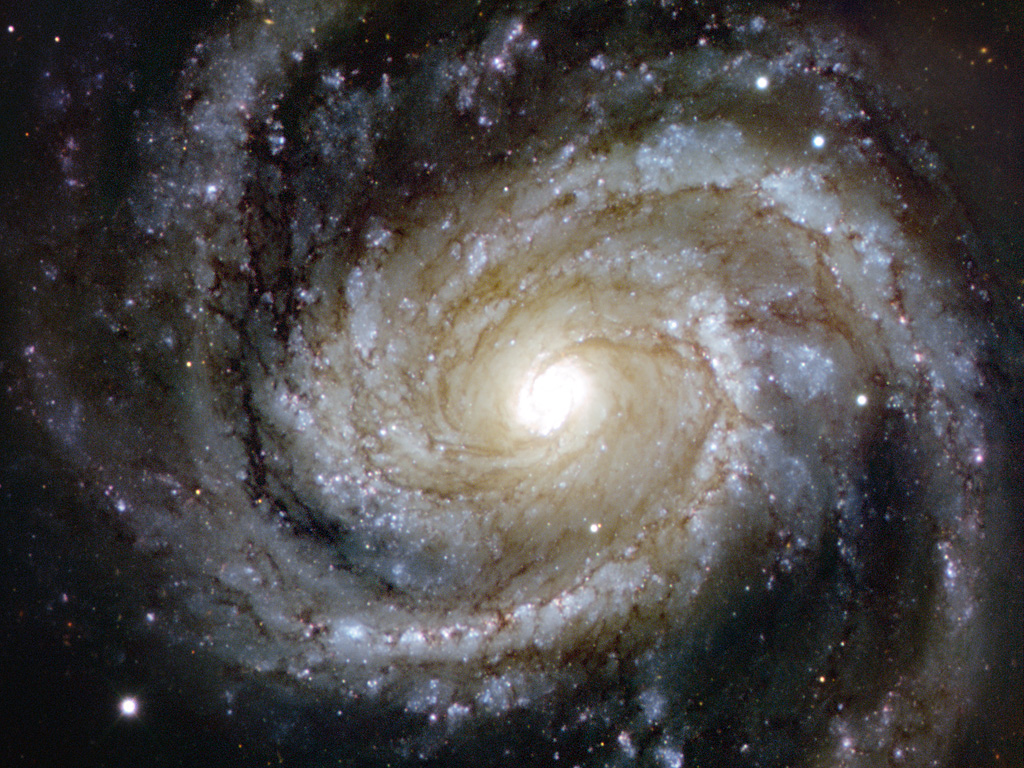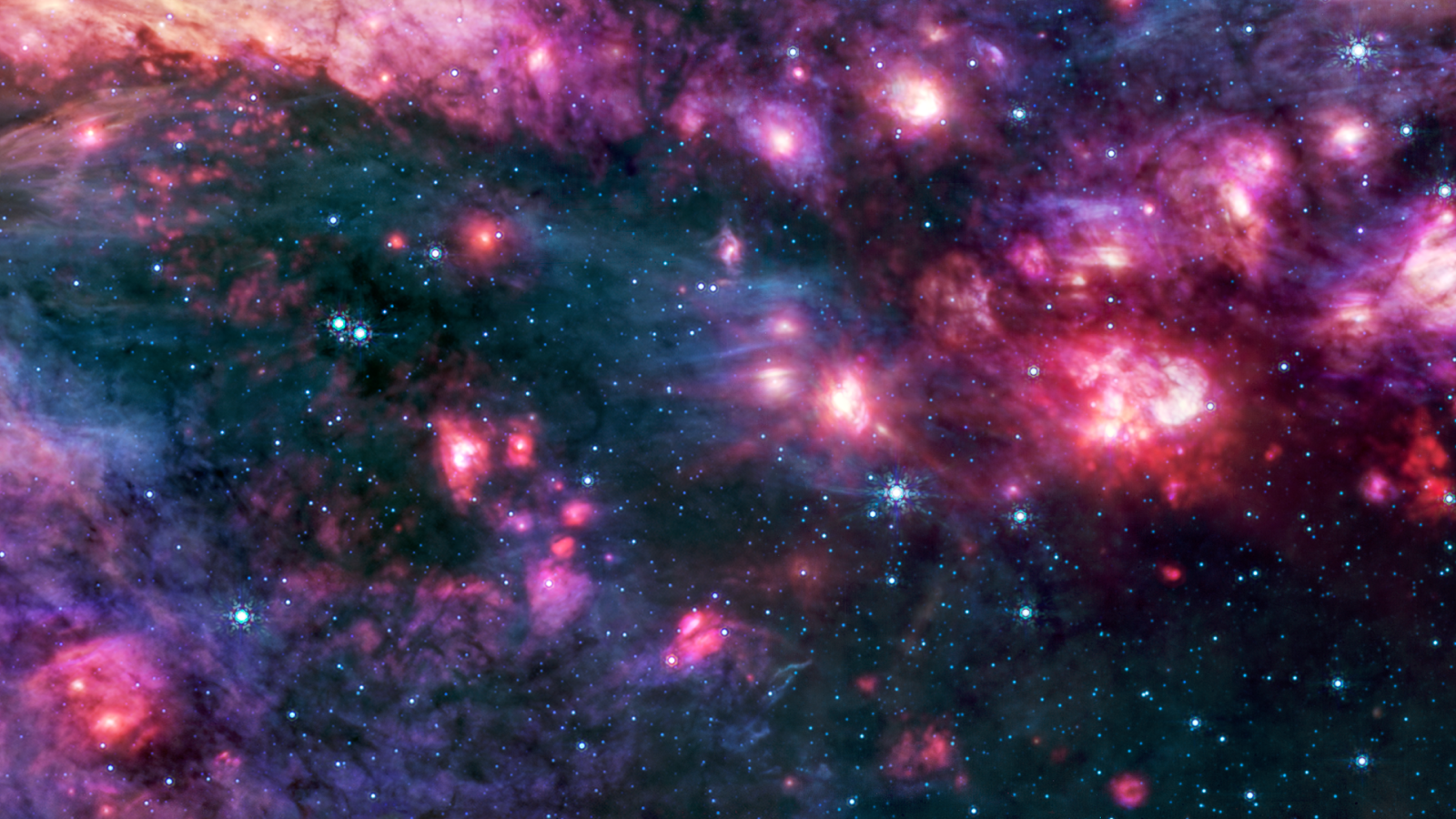Humanity's Journey, from the Big Bang to the Present (Op-Ed)


Roger Briggs is the author of "Journey to Civilization: The Science of How We Got Here" (Collins Foundation Press, 2013). In his book, he presents a new creation story of the universe, the Earth, life and humanity based on the evidence and skepticism of science. This Op-Ed is adapted from a slideshow originally posted to LiveScience. Briggs contributed this article to LiveScience's Expert Voices: Op-Ed & Insights.
One of the unheralded achievements of modern science is that it can provide a coherent origin story for humanity, something not possible just decades ago. With new discoveries in astrophysics, evolutionary biology, molecular genetics, geology and paleoanthropology, a continuous story has emerged starting from the Big Bang.
Soon after that penultimate origin event, when the universe was about 380,000 years old, it had cooled to about 3,000 Kelvin (4,940 degrees Fahrenheit), cool enough for electrons to attach to nuclei and form neutral atomic matter in highly excited states. After about 400 million years of expansion following the Big Bang, the universe was cool enough for gravity to begin coalescing clouds of hydrogen into stars, igniting nuclear fusion for the first time.
The birth of the first stars marked a turning point in the life of the universe — from that point forward, the universe took on the features we see today, with galaxies full of stars surrounded by planetary system. Stars perform some of the most important work in the cosmos: They manufacture the elements heavier than hydrogen, they create planets as part of their own formation, and they provide energy for those planets, as our own sun does for us.
Astronomers have yet to see a solar system that is neatly ordered like our own with a nice rocky planet located in the sweet spot for liquid water and life. Just how special is Earth's situation? The media was recently abuzz when researchers estimated (PNAS, Nov. 26, 2013) that there could be 8 billion or 9 billion stars in our galaxy with Earth-like planets — about 5 percent of stars — making the odds very high for intelligent life elsewhere. Yet no life, or evidence of it, has ever been found beyond Earth, so the jury is still very much out on the questions of how rare or common the Earth is, and how unique humanity may or may not be.
Evidence for the earliest known life on Earth comes from ancient rocks from Isua, Greenland, dated to about 3.85 billion years old. The signs of life these rocks contain are not fossils of actual microbes, but chemical signatures in the rock: molecular fossils. When these rocks are analyzed, they are found to contain higher than normal levels of carbon-12 isotopes compared to carbon-13 isotopes (which contain an extra neutron). When living things take in carbon (as CO2) they have a preference for carbon-12 and therefore all living things have proportionally higher levels of carbon-12 compared to non-living things. The higher levels of carbon-12 in the Isua rocks can only be explained by the presence of primitive life. This means that DNA, or some precursor molecule, had assembled by that point and could begin its relentless self-replication, driving the evolution of life.
Life on Earth faced its biggest survival crisis about 2.5 billion years ago when the atmosphere changed from carbon dioxide-dominant to oxygen-rich. Up until that time, life was prokaryotic, or bacteria-like, and thrived on carbon dioxide (CO2). But photosynthesizing bacteria used up CO2 and produced poisonous — to those bacteria — oxygen (O2) that eventually filled the atmosphere. To make matters worse, the drop in atmospheric CO2 plunged the Earth into a massive deep freeze that has come to be called the Snowball Earth Event. The planet was covered entirely with thick sheets of ice except near the equator, and life in the dark oceans was nearly driven to extinction. Yet somewhere in the midst of this two-headed crisis, a new and more complex form of life emerged: Eukarya. In 1967, biologist Lynn Margulis was the first to recognize that some prokaryotic organisms were able to merge together in a cooperative arrangement she named endosymbiosis that helped them survive the Snowball Earth crisis. We now understand that the mitochondria in animal cells and the chloroplasts in plant cells were once individual organisms before they were engulfed to become eukaryotic organelles — and these organelles still carry primitive genomes from their days as prokaryotes. The emergence of eukaryotic life opened the door for all higher forms of life that would follow — including humans.
Get the world’s most fascinating discoveries delivered straight to your inbox.
Life evolved into ever-more complex forms — invertebrates, vertebrates, reptiles and so on — with dinosaurs gaining dominance mid-way through the Mesozoic Era, several hundred million years ago. For nearly 200 million years, dinosaurs ruled the Earth. Then quite suddenly, about 65 million years ago, they disappeared. Eventually, researchers located an impact crater near Chicxulub, on the Yucatan Peninsula, that was about the same age as the extinction of the dinosaurs and much other life on Earth. Later research suggested the comet or asteroid that created the crater must have been 6 to 9 miles (10 to 15 kilometers) in diameter and traveling about 10,000 mph (16,100 kph) when it hit, triggering large fires, a global winter and other effects that were devastating for most land plants and animals and much of life in the sea. However, many of the small furry mammals that burrowed underground survived. They had been living in the shadows of the dinosaurs all along, but with the dinosaurs gone they could now thrive and grow in size. They became the new rulers of the Earth. Eventually, the mammalian lineage evolved into primates, then apes, then hominids, and, finally, the Homo lineage that produced human beings. If not for the Earth's chance encounter with an asteroid or comet 65 million years ago, it is doubtful that people would be here at all.
By about 5 million years ago, certain apes in Africa had mastered the art of upright walking — these were the hominids. For the next few million years they roamed Africa and scientists classify them within the genus Australopithecus, with at least seven different member species. But about 2.5 million years ago, a new lineage branched off from Australopithecus. This is now called the genus Homo. The most widespread view is that Homo habilis was the first member of this new lineage, and by about 2 million years ago an ancestor that we now call Homo erectus was thriving in East Africa and would soon begin to populate Eurasia and Asia. Paralleling the Homo lineage's development of tools was a rapid expansion in brain volume, eventually tripling in Homo neanderthalensis and Homo sapiens by about 200,000 years ago. But the Neanderthals seemed to stall in their development of technology, while Homo sapiens continued to evolve technology, culture and consciousness, turning humans' ancestors into a near-geologic force on the Earth. In the end, every hominid species went extinct — except one. Humans are the last, and only, surviving hominid.
Archeologists have strong evidence from the long record of tool-making that points to an astounding leap in human intelligence between about 100,000 and 60,000 years ago. Curiously, geneticists have found that the total human population on Earth about that time plummeted to perhaps just a few thousand individuals. It is not known exactly what caused this population bottleneck, but it would be impossible to ignore the eruption of Mount Toba 73,000 years ago on the island of Sumatra. This was the largest volcanic event in the last 30 million years, depositing 30-foot-thick layers of ash in India and triggering a global winter that may have lasted for a thousand years. It seems that the humans living in East Africa who survived the Toba event were a new and better version of Homo sapiens, perhaps capable of spoken language and the powers of collaborative culture that it bestowed. These new humans, sometimes called behaviorally modern humans, were soon able to leave Africa and spread to every habitable continent on the Earth in a relatively short time, pushing the Neanderthals and all other remaining hominid species to extinction. No other living thing has had a fair chance to compete with humans ever since the Great Leap.
For more than 2 million years, humans' ancestors were nomadic hunter-gatherers. This changed for the first time about 11,500 years ago as Earth's climate became warmer and milder. People in the Middle East began experimenting with edible plants, selecting seeds from the best plants and planting them in protected areas. This type of gardening, called horticulture, required that people remain in one place to tend their crops, and gradually the nomadic lifestyle was replaced by more sedentary, permanent camps.
People domesticated animals, too — as companions, servants or food sources. By about 10,000 years ago, large permanent settlements like Jericho and Catalhoyuk appear in the archeological record. By about 5,200 years ago the first city-states appear in several locations throughout the Middle East, and for the first time, the archeological record shows clear evidence of social stratification and a ruling elite holding almost all the wealth and power. This was the advent of civilization. With the invention of writing, people could now record human knowledge in a permanent and controlled way. Most of the characteristics of today's world now appeared, including centralized government and power, military forces and warfare, institutionalized religion, patriarchy, monetary systems, poverty, large-scale agriculture, trade networks and empire. Civilization soon appeared independently at many other locations throughout the world, including China, India, Egypt, Peru, Crete and Mexico. Not much of this has changed in the last 5,000 years except the names and places. But is this model still serving us well, or is humanity ready for something new — the next Great Leap?
For a more complete exploration of this journey, see the slideshow Big Bang to Civilization: 10 Amazing Origin Events.
for more, see "Journey to Civilization: The Science of How We Got Here" (Collins Foundation Press, 2013) and As Myth Marries Science, the Origin Story Matters(Op-Ed). The views expressed are those of the author and do not necessarily reflect the views of the publisher. This version of the article was originally published on LiveScience.



